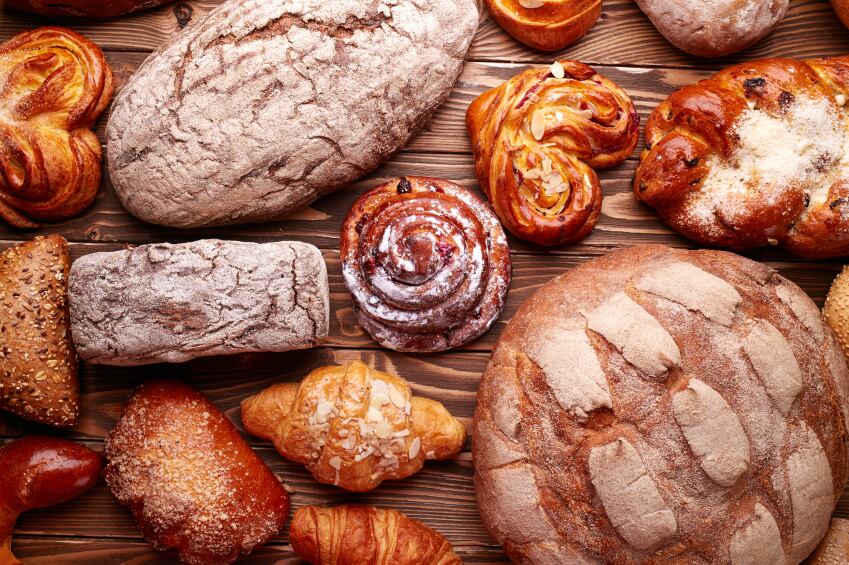Food sales across Europe rose by 12.9% between 2012 and 2017, new data from research firm Euromonitor International revealed. Total European expenditure on packaged foods climbed to €575.6bn in 2017. This represents a compound annual growth rate of 2.45%.
Growth across the region was not even: markets in Eastern Europe grew ahead of revenue in Western Europe, albeit from a lower base. Eastern European sales grew to €135.3bn with a CAGR of 6.8%. In Western Europe, packaged food sales increased to €440.4bn but CAGR stood at just 1.3%.
Bread fails to rise in Eastern Europe

Despite relatively buoyant market conditions in Eastern Europe, Euromonitor’s figures reveal that baked goods category growth trailed the pack. Baked foods sales witnessed a CAGR of 3.9% in the period.
Joana Sokolnik, senior research analyst at Euromonitor, told FoodNavigator that this trend can partially be attributed to the relatively mature nature of the baked sector in the region. With bread accounting for 92% of the bakery market in the region, changing consumption trends also took their toll.
“The consumption of bread has seen negative dynamics over the last five years in almost all Eastern European countries. On one hand, this reflects the mature nature of the bread category, on the other hand, it is also influenced by a number of different factors such as changing daily habits and preferences. For instance, Eastern Europeans [are] slowly turning away from the habit of having a slice of bread accompanying nearly every meal. The development of foodservice outlets and a culture of eating out [has also had an impact].”
It isn’t all bad news for bakery companies active in Eastern Europe. Shifting consumption trends have also seen value-added products that are available at a higher price point gain relevance. “Eastern Europeans increasingly purchase better quality and more health and wellness baked goods variants with surplus benefits - more wholegrain and high-fibre variants, variants with novel wellness ingredients such as goji berries and chia seeds. The improving economic situation and strengthening health and wellness trend will keep the sales up of more premium, good quality and products containing healthy features.”
Dairy goes sour in Western Europe

The dairy sector in Eastern Europe was among the best performing categories, with a CAGR of 7.1% in the five-year period lifting 2017 sales to €34.3bn. This trend was not mirrored in Western Europe, where dairy was clearly the worst performer.
Dairy sales in the region totalled €96.6bn and the category’s CAGR stood at just 0.27%. Leonardo Freitas, senior research analyst at Euromonitor, suggested that the decline was due to evolving consumer attitudes to dairy in the region and uncertainty over the wellbeing credentials of dairy products.
“A recent and significant change in lifestyle and consumer choices have been shifting the category throughout the region, and driving the decline for dairy. Whilst the concern regarding lactose intolerance has increased in the continent, many consumers started to slow down on their dairy-based products purchases and seek alternative products such as almond milk, soy-based products and coconut milk. Dairy products are also being increasingly related to digestion issues.”
In order to reverse these trends, dairy processors need to adapt to this new demand in a declining market, Freitas suggested.
Despite its challenges, the European dairy sector remains appealing due to its size and high penetration levels. “Dairy consumption in Western Europe is still high and the region is still expected to remain as one of the biggest dairy consumers throughout the world. Local European dairy producers are well known around the world for [their] quality of cheese and raw milk, which may be an advantage when seeking for other regions and countries to export their products to," Freitas told FoodNavigator.
Confectionery’s sweet success

Confectionery sales reported a strong showing in both Eastern and Western Europe rising by a CAGR of 7.5% and 1.44% respectively. This growth was achieved despite the negative associations with high sugar consumption and its link to non-communicable diseases such as diabetes.
According to Freitas confectionery makers were able to overcome this challenge by focusing on innovation, bringing out “trendy new flavours” and backing this investment up with a strong marketing spend.
Nevertheless, Freitas said public health messages are hitting home in Western Europe. “Public policies alerting consumers about the risk of a high sugar diet and the pledge for a more moderate consumption have had its effects, and portion control (smaller packs and formats) became more popular in the region, which reflected on volume sales. Despite this fact, chocolate confectionery and boiled sweets are still favourites when it comes to indulgence and consumers continue to spend on the category.”
Ready meals the star performer

Ready meals – a category that Euromonitor did not publish data on for the emerging Eastern European markets – was a star performer in Western Europe.
The sector booked a compound growth rate of almost 2% between 2012 and 2017, with sales rising to €22.8bn this year. Growth has been supported by demographic trends, such as a rise in the number of single person households. But it has also been fostered by the industry itself, which is investing additional resource in providing an evolved ready meals offering.
“A higher investment from ready meal manufacturers to [align] products to new consumer trends, such as developing health-oriented ready meals with fresher ingredients and a lower amount of calories/fat [has supported the sector’s expansion].
“Linked to the health and wellness trend, premiunisation is also a key. As ready meals were previously perceived as a cheap and a non-sophisticated meal option, manufacturers have put on extra efforts to reposition the idea of ready meal products with more added value, higher quality ingredients and new conservation techniques.”
